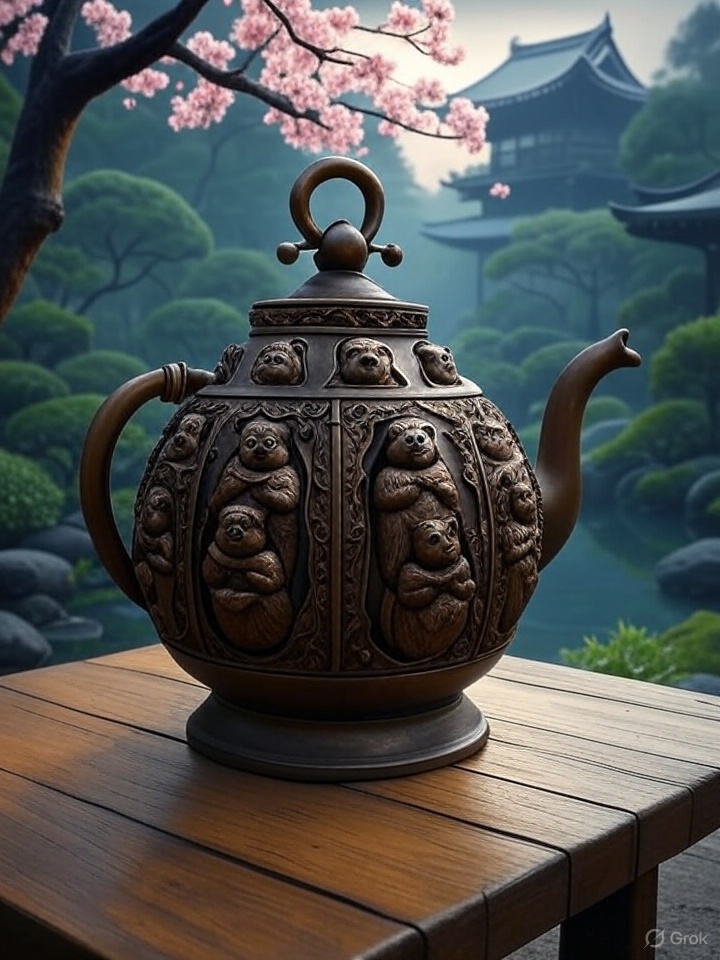Name Meaning
Morinji-no-kama (茂林寺の釜) translates to “The Kettle of Morinji Temple.” It refers to a folktale from Gunma Prefecture about a teakettle that is actually a magical tanuki.
- Morinji (茂林寺) = Name of the temple
- No = possessive particle
- Kama (釜) = kettle or cauldron
Origin
- Originates from a story associated with Morinji Temple in Tatebayashi, Gunma Prefecture.
- Part of the larger Bunbuku Chagama tale, passed down in picture books and kabuki.
- The temple still honors the story with statues and preserved relics.
Appearance
- Appears as an ordinary iron kettle that reveals its true nature as a tanuki yokai.
- When transformed, it takes on a playful half-kettle, half-animal form.
- Sometimes shown dancing or performing tricks to repay kindness.
Behavior & Myths
- The tanuki in disguise helps the priest who rescues it from harm.
- Performs in street shows to earn money in gratitude.
- Eventually retires to the temple in peace and is honored as a sacred object.
Symbolism
- Symbol of gratitude, friendship, and the joy of helping others.
- Emphasizes transformation and hidden potential.
- Often used as a parable for compassion and acceptance.

